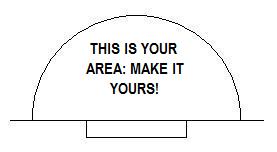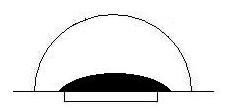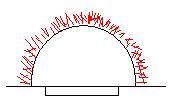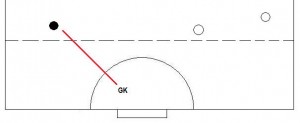Ever wondered what the best way to learn about how to play in goal is, without being coached or learning by game experience? Well, the simplest answer, is to watch someone else! You can learn a great deal simply by watching another game after your match has ended or watching game highlights over the Internet.
Don’t just be an observer!
Firstly, you need to ‘participate’ in the game. If you just watch what happens and don’t absorb the reason for the goals and a team conceding and losing, then you won’t learn how to prevent that happening in your own games. You don’t want to be a passive passenger to the game, but actively think about and mentally remember what the causes for the goals were. It may sound sad, but taking notes of the game and the goalkeepers (especially easier if you’re watching highlights over the Internet because you can make notes on your computer/laptop!) will help you to keep track of the things you have learnt.
Act like a scout
The best way to watch a game is to watch it as if you were scouting for the best goalkeeper there (out of the two playing). The mindset to have is to think like a scout. Imagine you’re the goalkeeping coach for the international team and you’re looking to add depth to the squad or want to decide on who your first choice will be for an upcoming tournament. I have actually been at a game two years ago where there was a scout doing exactly that and noticed what they were looking at (even if I failed to politely ask a few questions!!). Note: I wasn’t the one being scouted!! I was just watching!
Don’t just scout just watch the goalkeeper you follow or are rooting for, but also the opposition goalkeeper at the other end. You may miss out on exciting battles in the midfield, but your focus is after on the keeper and how they work with their defenders. When watching any game, try to keep track of both goalkeepers and evaluate who was the best. Goalkeeping duels are always fun to watch!
What to look for
When watching any game, there are certain things you want to look for. Focus mainly on the successes and failures to isolate what is good about their ‘game’ and what is bad about it:
- What the goalkeeper does well – if they make significant saves to turn the game around and when they make the save e.g. an important, timely save to keep the game tied
- The goals the goalkeeper allows (if they do!) and why – think about the reasons i.e. over active in their D and straying too far from their starting line…
What to listen for
Watching is not the only thing you can be doing. You can also listen in on the action and work out what the goalkeeper is saying to his team mates; what changes they are calling for etc. Knowing how a goalkeeper interacts with their defence will help you improve on your own skills in organising your team.
What to analyse
You can also analyse more deeply the things they are doing. In terms of technical skills try to apply what you’ve been taught (or what you know from experience if you don’t have a coach) and see how the goalkeepers are acting in relation to that. Sound technical goalkeepers should make few mistakes.
Here are some ideas:
- How the goalkeeper controls rebounds
- When the goalkeeper takes command of the situation instead of letting his defence deal with it (such as coming off the post to tackle)
- How the goalkeeper positions themselves in their ready stance
- How quickly the goalkeeper recovers after a low save
Where to watch games
The best action is obviously going to be watching it in person, so if you are lucky enough to live close to top division national league hockey, then go and watch a game at the weekend (in England most national league games are played or have been played on a Sunday, with everyone else mainly playing Saturdays, so there’s no excuse!)! When I wasn’t playing, I would go down and watch East Grinstead or my home club Oxted. If possible, try and make it to international games (some nations will also play friendlies, such as England’s series of friendlies last year) to really get a feel for the highest level of the game.
The Internet
If you can’t get to high level games because you aren’t local, then the Internet is your friend. Here’s a few links to some prominent websites that have highlight footage of games:
- Hockey TV – http://fieldhockeytv.com/
- NOS Sport – http://nos.nl/video/184491-hockey-hdmbloemendaal.html
YouTube
YouTube is another great place to look for hockey highlights to watch and learn from. Hockey nations like Holland, where matches are televised, will consistently upload videos. Do a search for a team you know, like HGC of the hoofdklasse and you should be able to find some matches.
For example:






